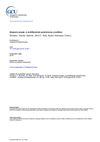Hair Loss in the Elderly
November 2011
senescent alopecia androgenetic alopecia telogen effluvium alopecia areata hyperandrogenemic status androgen-producing tumors alopecia neoplastica tumor metastasis breast carcinoma age-related hair loss female pattern baldness hair shedding spot baldness high androgen levels hormone-producing tumors cancer-related hair loss cancer spread breast cancer

TLDR Early treatment is important for better hair regrowth in elderly women with hair loss.
In 2011, the study "Hair loss in the elderly" discussed the distinctive features of hair loss in older individuals, particularly women, and emphasized the importance of early treatment for optimal cosmetic results. The study noted that greying is usually the first sign of hair aging, with minimal changes in the number of hair follicles and hair shaft properties. The most common forms of hair loss in elderly women were identified as senescent alopecia, androgenetic alopecia, acute or chronic telogen effluvium, and alopecia areata. The study also highlighted the need to check for hyperandrogenemic status and androgen-producing tumors in elderly women with rapid or sudden diffuse hair loss. The study concluded that there were few treatment options for advanced androgenetic alopecia with unsatisfactory results, and early active treatment to eliminate inflammation was crucial for best hair regrowth. The study also noted that alopecia neoplastica due to tumor metastasis, particularly from breast carcinoma, was a serious but infrequent issue for elderly women.
